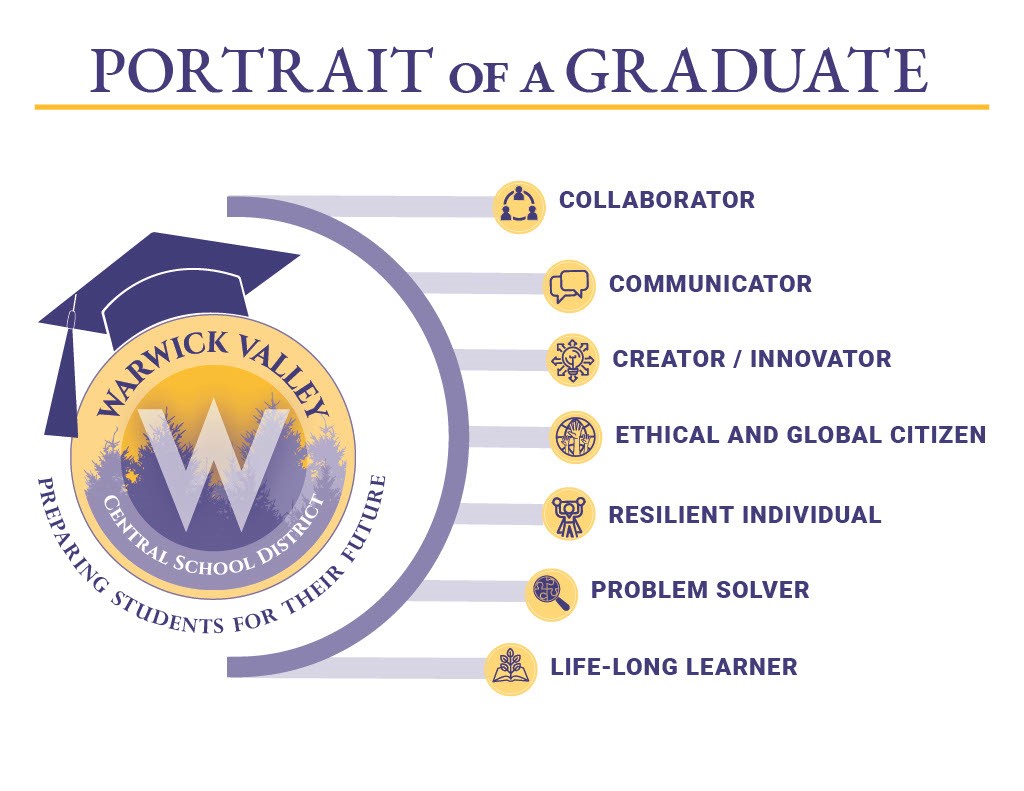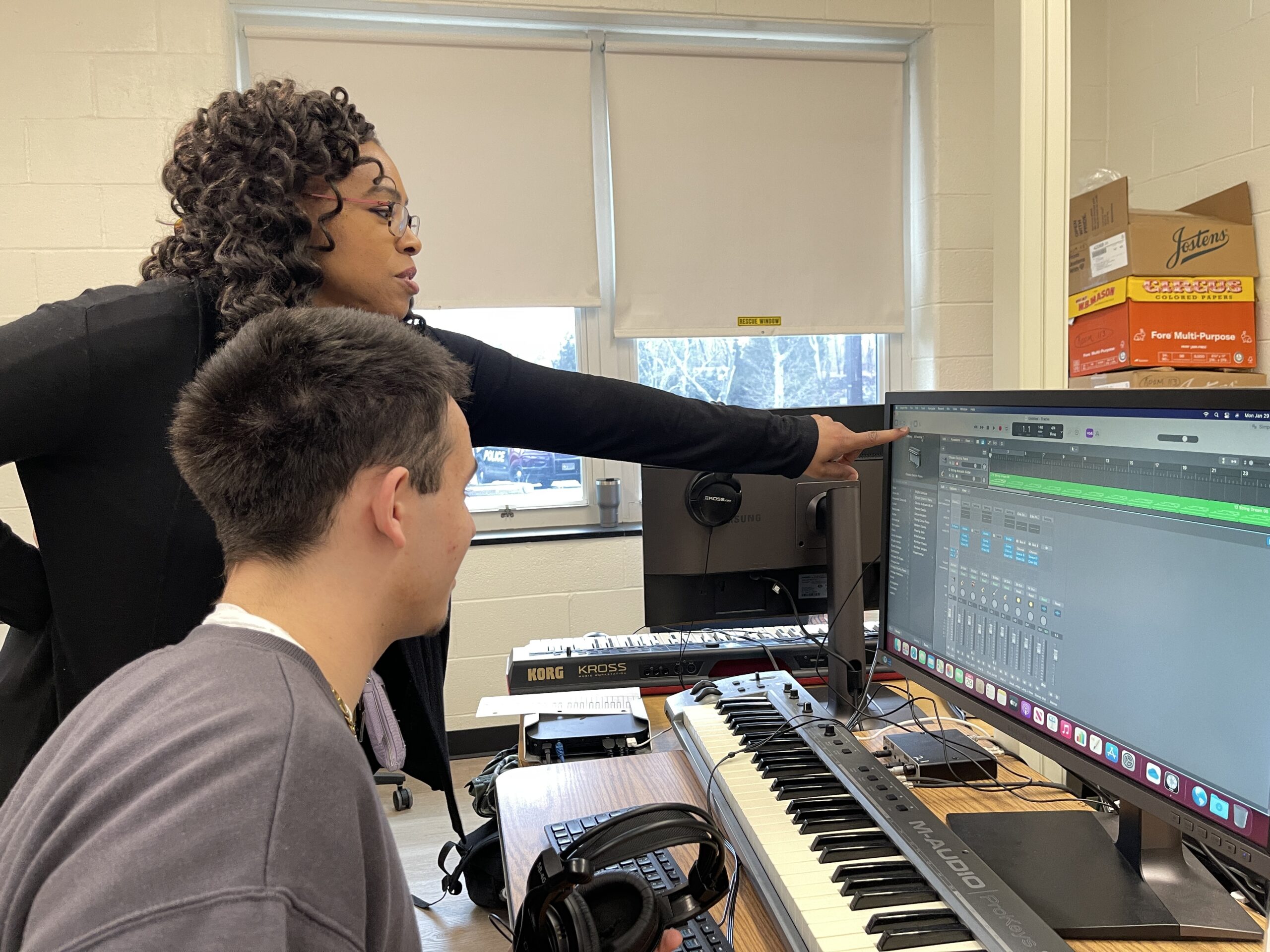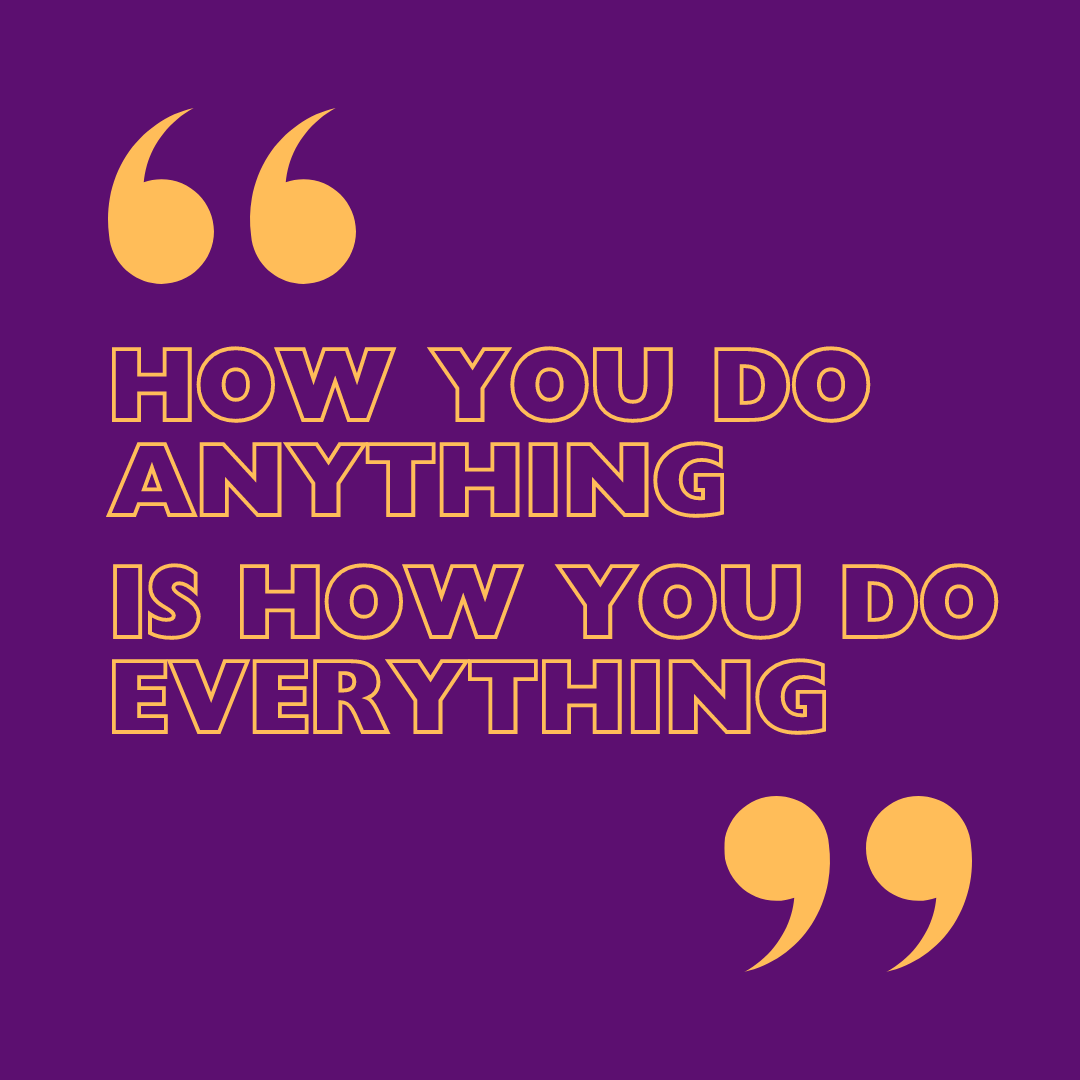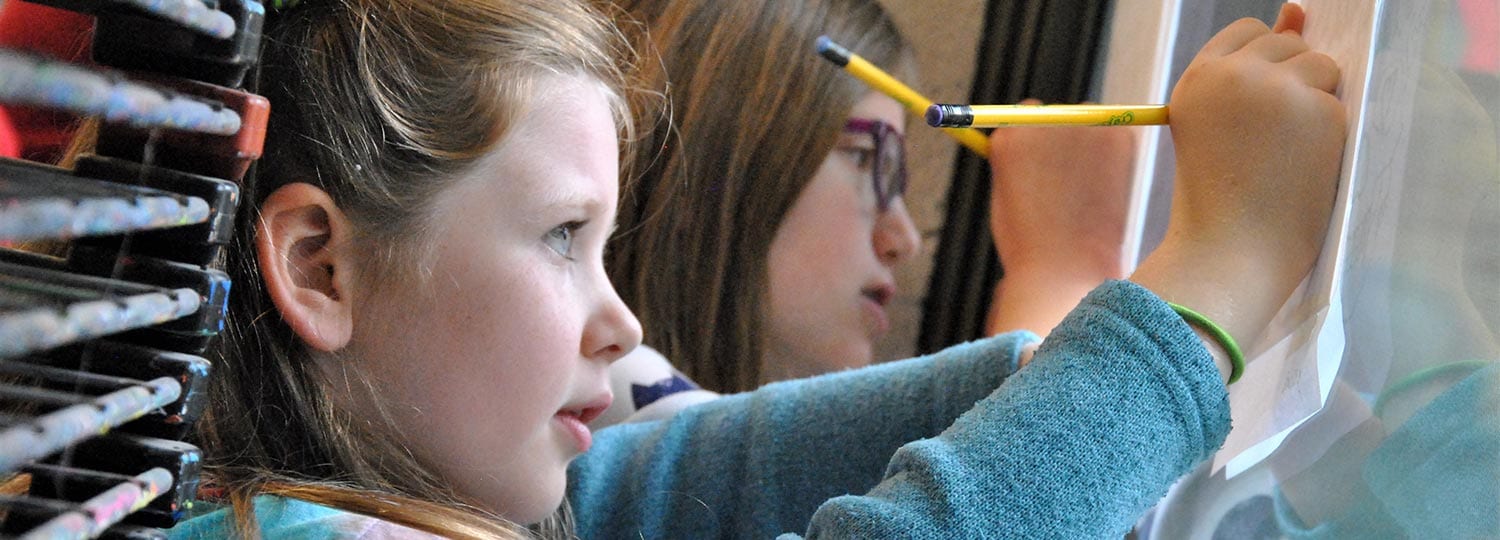Portrait of a Graduate in Action: Music Production Class & Studio Music Club
Portrait of a Graduate in Action is a regular website feature that provides greater insight into the Warwick Valley Central School District’s Portrait of a Graduate, the district’s representation of its priority goals for teaching and learning, in order to graduate individuals who are collaborators, communicators, creators and innovators, ethical and global citizens, resilient individuals, problem-solvers, and life-long learners.
 Music Production is a single-semester course that introduces students to the software and hardware tools for producing music. In the class, which stresses application and creative content, students learn to compose original music and understand the basics of the music business. Students learn to use a creative platform called a Digital Audio Workstation (DAW) to bring their musical ideas to life. Music teacher Elissa Maynard guides students through a semester’s worth of creative stand-alone activities and larger projects designed to expose them to performing with electronic instruments, multi-track recording, arranging, typesetting music for others, and much more.
Music Production is a single-semester course that introduces students to the software and hardware tools for producing music. In the class, which stresses application and creative content, students learn to compose original music and understand the basics of the music business. Students learn to use a creative platform called a Digital Audio Workstation (DAW) to bring their musical ideas to life. Music teacher Elissa Maynard guides students through a semester’s worth of creative stand-alone activities and larger projects designed to expose them to performing with electronic instruments, multi-track recording, arranging, typesetting music for others, and much more.
Ms. Maynard is also the advisor of the high school’s Studio Music Club. The club gives students the opportunity to explore many of the same interests and develop many of the same skills as Music Production students, but in a more casual environment. The club is a non-graded, not-for-credit co-curricular, and is a creative outlet for both traditional and non-traditional music students.
In both cases, what may seem like simple, practical instruction, actually nurtures far deeper qualities and lasting life skills that align with our district’s Portrait of a Graduate. The music production classroom is home to some of Warwick’s most passionate communicators, creators and collaborators.
 Welcoming Creators
Welcoming Creators
Creators solve problems using imagination and evidence-based knowledge. They investigate answers to their own questions, and often share their ideas through the arts, or design and building processes.
“So, you have orchestra, band, and chorus kids, but there’s this whole other population of students here in Warwick who make music – who are creative, who are songwriters – but maybe feel like they have nowhere to fit in,” explained Ms. Maynard. “A lot of those students want to make electronic music, or learn how to produce a track, and that’s the Studio Music Club demographic, right there!”
In its first year, the credit-bearing Music Production Class had just five students enroll. At the time, however, Ms. Maynard just could not shake the sense that there had to be more than those five students in Warwick who wanted to make music outside of the typical school music model. She was right! Nowadays, her Music Production Class is full!
In the first year of Studio Music Club, 12 students turned up to join! She said that many of the students who find their way to both Music Production class and Studio Music Club are surprised when they realize that music production is something you can study in school, let alone something you can actually major in in college. When they do, they become all the more motivated and enthusiastic in their endeavors. That shared passion for a specific art form that can bring students out of their shells.
Encouraging Communicators
Communicators are individuals who connect with people both like and unlike them. They read and listen; they research and inquire. They “get” big ideas and broad concepts, and can make them understandable and relatable for different audiences. Communicators advance learning by educating and empowering.
Ms. Maynard has seen even the most reserved students blossom into effective communicators in Studio Music Club. She has seen students go from being “super-shy” to being outgoing and open to share their ideas.
“Sometimes they come in not even being able to talk to other people, and I see them grow in almost the complete opposite direction,” said Ms. Maynard. “Then, you see them start being that way in their other classes, and that’s when you know they’re feeling comfortable. They just need somewhere to go, where they feel like, ‘Oh, they’re accepting me; I can feel safe and share my ideas here.”
Enabling Collaborators
Effective collaborators hear, acknowledge and appreciate diverse perspectives in conversation, and are able to foster strong group dynamics by their openness to varied opinions. They solicit suggestions from others, and value their input when forming ideas and solving problems. Collaborators unite those around them toward a common goal. Once students are open to talking to and hearing one another in Studio Music Club; that is when collaborations take off!
Ms. Maynard has seen it repeatedly. A student working on a song will share the track with another student for his or her creative suggestions. She says those moments are like little epiphanies every day in the studio. She said she hears encounters like the one she recalls here, all the time!
Student 1: Bro, listen to this beat. What’s missing?
Student 2: You just need some bass in that section. You’ve got to have that drop!
“And if that’s not what we’re talking about when we talk about being a collaborator, I don’t know what is,” laughed Ms. Maynard. “They’re in here all the time collaborating with each other like that. They’re learning all these practical skills, but also the soft skills, those life skills will stick with them and serve them well in so many ways.”
 Pathway of a Graduate
Pathway of a Graduate
Last year, one of Ms. Maynard’s students enrolled in her course based on a love of music, but, admittedly, without a clear sense of what he hoped to achieve in the class.
“Then, he was writing. I was listening. His music was phenomenal,” Ms. Maynard enthused. “I called home and asked his parents if they’d listened to the stuff their son was making. I told them I thought he could make a career of it.”
When the class ended, that student’s parents enrolled him in music production lessons and he has gone on to study music in college.
“At the end, [students] realize, wow, I have something here, I have a possible career,” said Ms. Maynard. “They can go into music production, become a recording engineering, score video games or films, or even niche things like becoming a Foley artist. The career pathways are there!”
Our district’s Portrait of a Graduate articulates the community’s aspirational vision for the skills, attributes and dispositions that every Warwick Valley graduate should possess. It places an emphasis on relationships, experiential learning, student choice, group collaboration and the development of enduring academic, interpersonal and critical thinking skills.
“I tell my students all the time that how you do anything, is how you do everything,” said Ms. Maynard. “Whether it’s in AP Government or Math class, in life, anywhere you have a problem to solve or group work to do, all of those skills that we pick up here trickle out into everything else.”
By instilling the qualities of the Portrait of a Graduate in our students, and helping them develop these skills, we make sure Warwick graduates are uniquely prepared to take advantage of every opportunity to engage thrive and to engage with their communities in ways that help them find purpose and achieve success.

